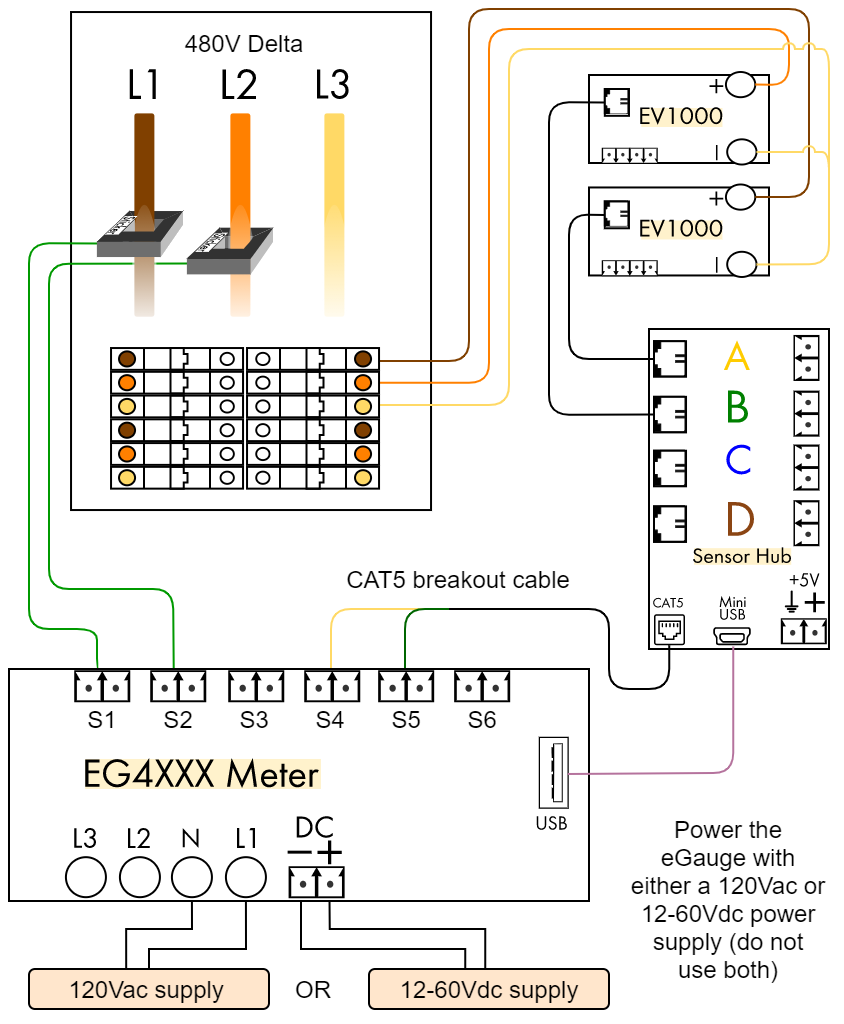Monitoring 480V and 600V delta systems
- Never attempt to connect the eGauge directly to a 480V delta or 600V delta service using the "Lx" and "N" terminals.
- Connecting an eGauge meter directly to a 480V delta or 600V delta service will destroy the meter. This is not covered under warranty.
- The eGauge requires a connection to the "N" terminal, failing to connect a proper "N" can result in device damage.
The eGauge is capable of directly measuring voltages up to 277V L-N (480V L-L). In the case of a delta system with no neutral, the maximum phase-to-phase voltage is 277V as the "N" terminal of the meter has one of the line voltages connected.
A 480V or 600V delta without a neutral may be monitored by the eGauge using EV1000 High Voltage Sensors.
The below diagram shows a 480V delta system. 600V delta systems may be measured in an identical manner.
EV1000 high voltage sensors are CTid-compatible. See this article for instructions on configuring CTid-compatible sensors.
The register configuration for the example shown above is simply S1xS4 + S2xS5. Note that your configuration may differ depending on which ports are used.
Proper CT/phase pairing is required for accurate readings.
Notes:
The eGauge is a Blondel Compliant meter and will measure accurately the total load of a three-wire three-phase service using two CTs when correctly installed as outlined in this document.
This method of eGauge installation employs the Two-Wattmeter Method of power measurement which is based on Blondel's Theorem. Blondel's Theorem essentially states that you need one less CT than the number of current carrying conductors in your service to accurately meter the total load of the service. Further research on these topics, if needed is left to the reader.
When completing an installation of this type it's particularly important to adhere to the wiring diagram included in this document. CT orientation must be consistent and phase verification should always be performed to ensure that there is no phase mismatch between CTs and their respective Line voltages.


